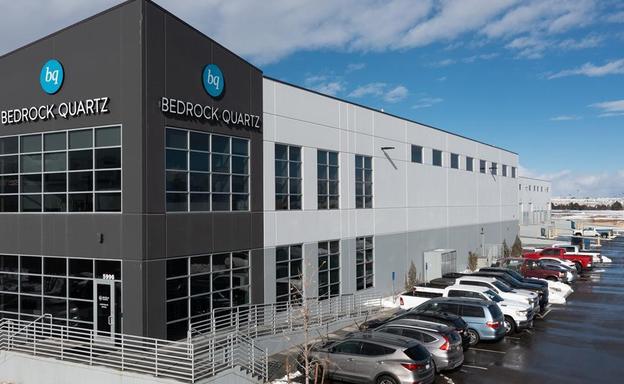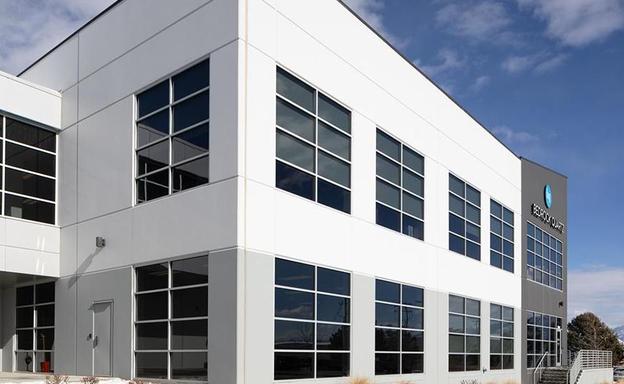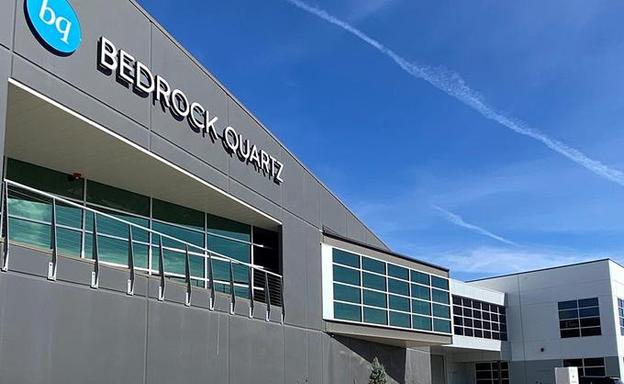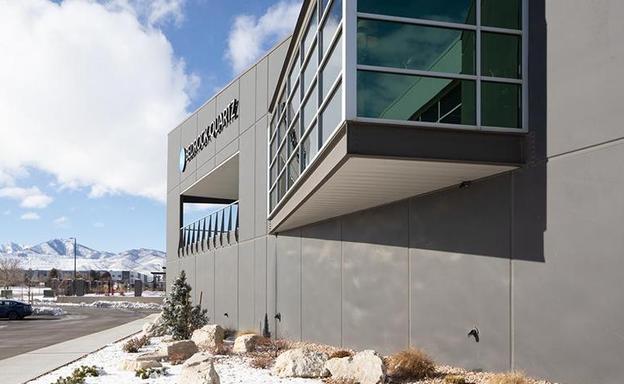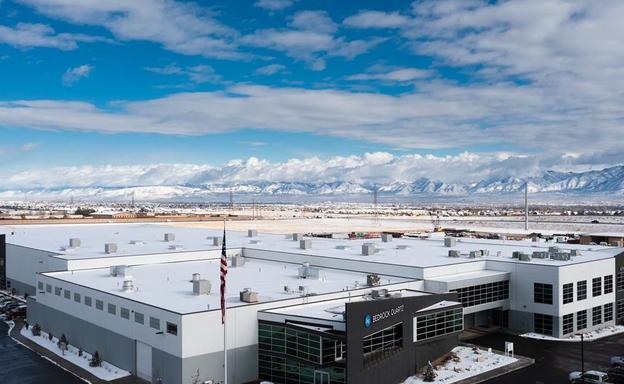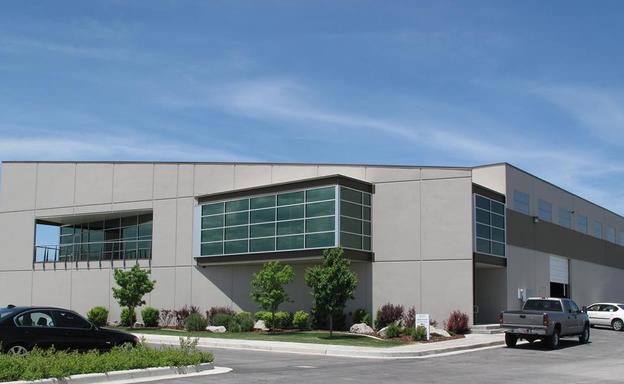Bedrock Quartz Addition
Summarize the project's program, features, and achievements: Bedrock Quartz has the most state-of-the-art slab fabrication facility in the region with fully automated processing. They provide fabrication and installation of slab materials for counter tops, tub surrounds, stair treads, fireplace surrounds, hearths, and flooring, etc. Slab materials include granite, marble, quartz and other natural stones as well as recycled materials such as ice-stone, paper-stone, vetrazzo, and many others. They are the only stone fabricator in Utah that is accredited with the Marble Institute of America. Nearly all process water and waste materials are recycled. The original facility was over a decade old and consisted of 22,266 SF of manufacturing and office space plus a mezzanine of additional office areas. The new renovation includes 99,312 square feet of new manufacturing, warehouse and office spaces. The industrial spaces are single-story while the office areas are 2-story. The original facility was constructed using tilt-up concrete, as is the new renovation/addition. Although the new portions of the facility have taller floor to ceiling heights, a larger footprint and a larger overall massing, they were designed to compliment the original architectural design and to not distract from it. When looking at the renovated facility, it is nearly impossible to tell which portion of the building is the original. The building elevation has a clean, modern, Zenlike feel. The shapes are traditional. The front façade although mostly flat, steps in and out. Each corner or end of the front elevation has a tapered panel that slopes toward the center of the building. The first and third massing are larger than the second and fourth. The original building has a negative rectangular space which is angled and serves as a covered balcony, while an opposing rectangular mass at the same angle is cantilevered out of the building, with windows in each face. Because this was such a unique design element, care was taken to try not to compete with these elements or features.
What obstacles were overcome related to the schedule, budget, program, specification, site, etc. on this project? The unique challenge was to renovate a manufacturing facility that was over a decade old and to expand it into a modern, state-of-the-art manufacturing facility that didn’t look like an addition, while honoring the original architectural design and complimenting it. State of the art equipment and processes are used which recycle nearly all the water which is used in the stone cutting and manufacturing processes. Waste materials from the processes are recycled and used in landscaping materials. In the renovation of the existing facility, the original building was saved and re-used. Because the original building was constructed of tilt-up concrete, it was durable and sustainable. Tilt-up concrete was selected for the construction of the expansion as well. The tilt-up walls act as the structural system for the building acting as both bearing walls to support gravity loads and shear walls to withstand lateral loads (from wind and seismic forces). The walls are also durable, fire-resistant, mold-resistant, have great sound properties, thermal properties and are cost effective. The walls were able to be erected quickly, greatly reducing the construction schedule when compared to conventional construction. Because most of the work can be done while the walls are still on the ground, they are much safer to construct.
Please communicate any engineering complexities or unique features of the panel design for this project. ? With special reinforcing details, the size of the punched windows was able to be increased. The windows extend from floor to ceiling. The abundance of large windows increases the amount of natural light, thus reducing the lighting load. A dark tint was used for contrast as well as to reduce the mechanical load requirements of the building, providing a more energy efficient design. The exterior wall panels are only 8” thick, with ¾” thick reveals. Effectively the wall thickness is only 7.25” thick. The tallest wall panels are 42 feet tall. The recommended height to thickness ratio for tilt-up walls historically has been 48. The height to thickness ratio (neglecting floors) for this building is 69.52. That is a 45% increase! To accomplish this, vertical reinforcing was increased in order to eliminate the need for strong backs. Once the walls are in place and braced at the floor levels the effective height is reduced to 32.75 feet and a height to thickness ratio of 54.21. This manufacturing facility has transom windows to provide natural lighting in the manufacturing areas. The windows in the office areas are increased to 10’-8” wide x 10’-0” tall and even up to 22’-8” wide and 10’-0” tall.
What is the potential for this project's impact on the community and/or environment? This building is an example of a state-of-the-art manufacturing facility that is mindful of the community and of the environment. It has great curb appeal and provides a healthy workplace for employees. Water conservation has been considered in the landscape selection as well as the internal manufacturing processes. The heat-island effect has been reduced due to the light-colored roofing materials and light-colored landscaping stones and light-colored building colors (on most facades). Site lighting is also controlled. Tilt-up concrete which was once considered the least desirable architectural finish, and which was only used for inexpensive big box buildings, has been used to create a modern manufacturing facility that has the look of a class “A” office from the street. The craftsmanship and refinement of design is apparent in the finishes of this building, both inside and out. Great care was taken in the construction of this building and the high quality is apparent. Safety was also a top concern and priority for the building, and all involved in the project. By building this building using tilt-up concrete construction, safety was greatly enhanced. This construction method is considered to be much safer than conventional construction since most of the work can be done while the panels are still on the ground.
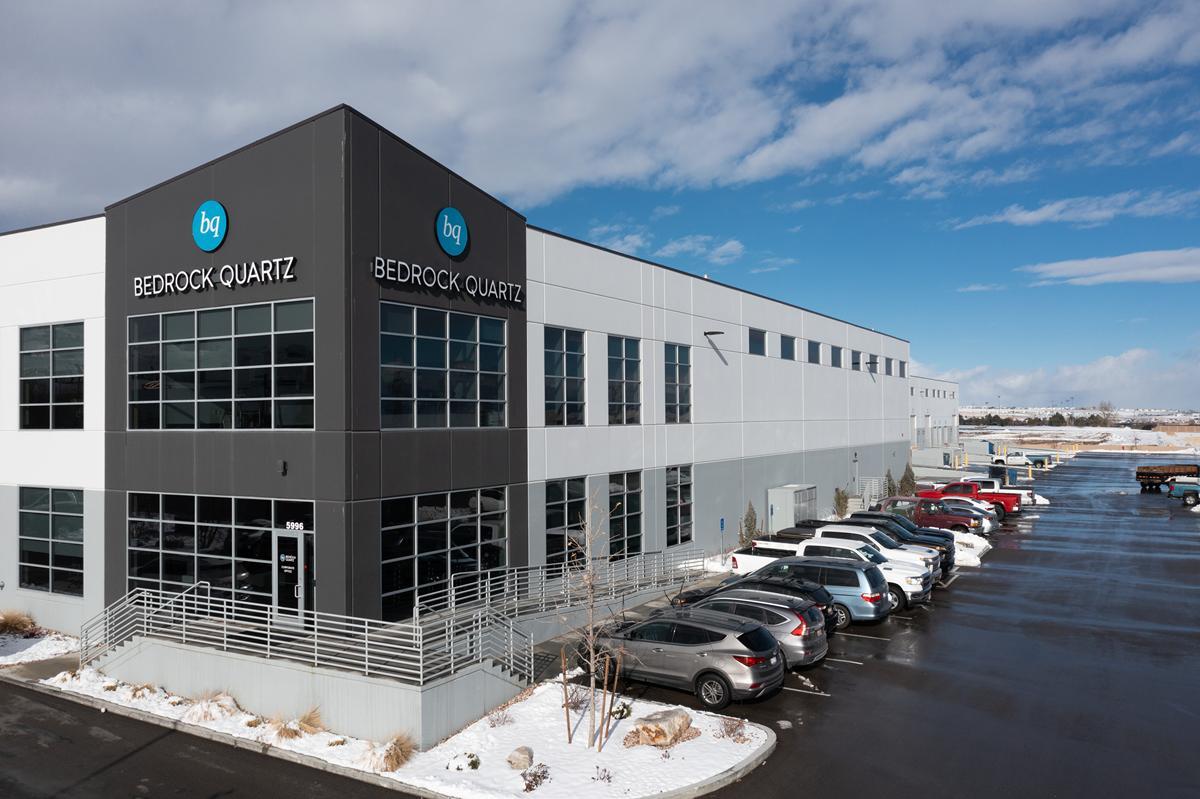
Project Location
West Jordan, UT 84081
United States
TILT-UP ACHIEVEMENT AWARD
The Tilt-Up Achievement Awards were established to honor projects that use site-cast tilt-up concrete to introduce new building types, advance industry technology and provide unique solutions to building programs. Winning entries illustrate the variety, beauty, and flexibility of tilt-up construction.
ACHIEVEMENT
2023
The world’s greatest tilt-up structures are featured by the TCA as Tilt-Up Achievement Award Winners. Learn more >
Project Images
Project Team (TCA Members)
- Developer/Owner:
- General Contractor:
- Monson Construction, Inc.
- Concrete Contractor:
- Monson Construction, Inc.
- Architect:
- AE URBIA / J M Williams and Associates, Inc.
- Engineer:
- AE URBIA / J M Williams and Associates, Inc.
- Suppliers:
- Photographer(s):
Project Specifics
- Project Category:
- Production/Manufacturing
- Building Types:
- Manufacturing Plant
- Finishes:
- Paint (Flat)
- Features:
- Reveals
- Insulation:
- Post Applied (Interior)
- Environmental:
- Number of Floors:
- 2
- Total Floor Area:
- 121,578 sq ft (11,295 sq m)
- Project Footprint:
- 121,578 sq ft (11,295 sq m)
